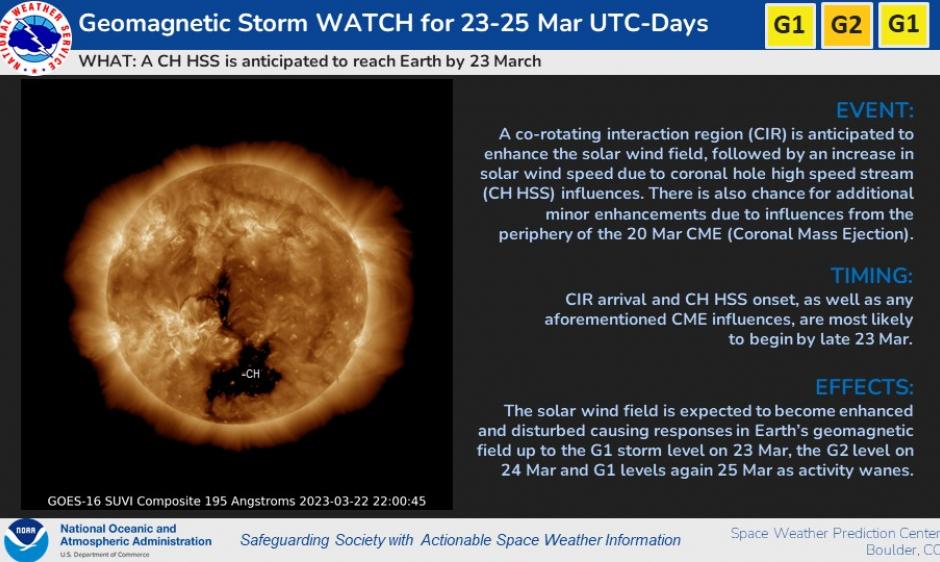
Geomagnetic storm watches are in effect for 23-25 March, 2023. The watches are primarily due to coronal hole high speed stream (CH HSS) effects, although glancing influence from a coronal mass ejection (CME) that left the Sun on 20 March is also possible late on 23 March. Expected enhancements and disturbances in the solar wind field due to combined co-rotating interaction region (CIR) and CH HSS influences are likely to result in isolated periods of G1 storm levels late on 23 March and isolated G2 storm levels on 24 March. Solar wind speeds are likely to be in excess of 600 km/s and continue into 25 March, resulting in isolated G1 storm levels. Continue to visit our SWPC webpage for the latest information and forecasts regarding this activity.
A CIR results from how a high speed stream interacts with the relatively slower ambient solar wind speed and forms a compression region ahead of the HSS.